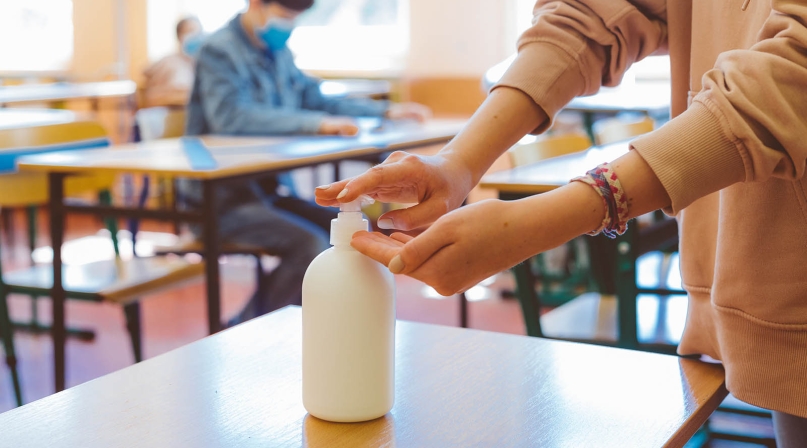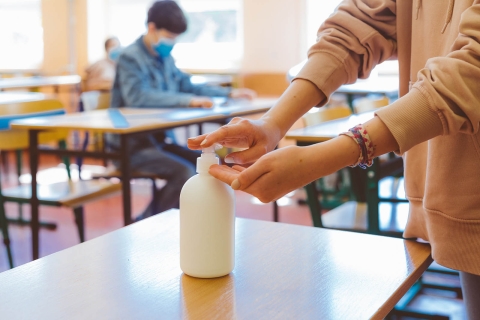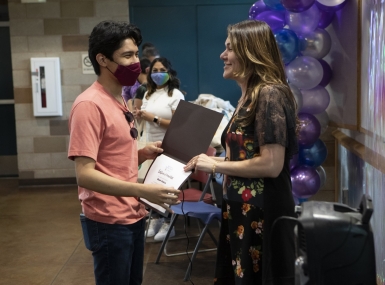Counties help guide fall school reopenings
Author
Upcoming Events
Related News

The back-to-school season will look different this year.
When many schools across the country transitioned to virtual classrooms in mid-March as the COVID-19 pandemic continued to spread, it remained unclear what in-person learning would look like this fall.
In addition to considerations provided by the Centers for Disease Control and Prevention (CDC), county health departments are providing additional guidelines to help school districts form strategies for reopening to keep students, teachers and staff safe.
In Bucks County, Pa., county Health Department Director Dr. David Damsker released guidelines for the 13 school districts throughout the county.
The Pennsylvania Department of Education is requiring each school district to create a health and safety plan before reopening. School districts are advised to consult with local health agencies when forming reopening plans.
While each school district makes the ultimate decisions regarding reopening procedures, Damsker said the county health department provided general guidelines for each district to choose to follow.
“They are educators,” he said. “They are not public health officials and they need some guidance from the local health agency to steer them along even if they’re making the final decision.”
The Bucks County Health Department guidelines include at-home symptom screening of students and staff, mandatory mask-wearing on buses and for staff who are unable to social distance, disinfecting high-touch surfaces and staggering seating arrangements with possible assigned seating in cafeterias.
“It’s all part of a continuum of things that we’re doing to keep kids safe, but still have the pragmatic ability to operate schools,” Damsker said.
When it comes to the CDC’s recommendation of studentsremaining at least six feet apart, he explained that it may not be possible in some classrooms to keep that distance.
“We knew right off the bat that the CDC guidelines saying ‘you must be six feet away from everybody else’ is not actually tenable or practical to open up a school using those guidelines,” he said.
Damsker explained that students and teachers have the option to wear masks all day, but it is not mandatory based on the county’s recommendations. He emphasized that mask-wearing is often difficult for young children.
If a student were to test positive, Damsker said the county’s guidelines do not currently recommend shutting down schools. The health department would contact trace to identify students who may have been exposed and take appropriate measures depending on each case.
“The virus is not going to go away by shutting down a school,” he said. “We need to work with the disease and figure out ways of handling it without going to the extreme every time.”
Damsker said the department’s guidelines may become more or less restrictive depending on case counts this fall.
He said the most important aspect for schools to reopen is that parents not send their children to school if they’re sick. For students or parents who do not feel comfortable returning to the classroom this fall, Damsker said it is up to each school district to offer virtual options.
“We believe we can send the kids back safely,” he said. “We can’t eliminate all the risk, but we can minimize it. We want to start treating this virus like other communicable diseases that we have in our society.”
In Sacramento County, Calif., Health Services Director Dr. Peter Beilenson said the county health department has worked collaboratively with the Sacramento County Office of Education, which oversees 13 school districts throughout the county that range from 2,000 to 100,000 students.
The guidance, as of June 2, focuses on “cohorting” students by alternating the days and times groups of students are in class.
“The idea being, of course, to space out the kids and to allow them to have some kind of social distancing,” Beilenson said.
The county’s recommendations include masking for students in third grade and above, cleaning desks between classes and maintaining six feet of distance between students.
The guidelines recommend not playing contact sports, but allowing for individual sports such as track, cross country and tennis.
For other extracurricular activities, the guidelines recommend students are socially distanced and masked, and advise against holding band and drama.
Beilenson said school districts will be mildly challenged in finding resources to enact these guidelines, but because of the rapidly growing city of Sacramento, many newer buildings have more space.
“That being said, I don’t think there’s any school in the country, particularly a public school, that will be able to perfectly match with their current everyday stuff,” he said.
If a student tests positive, the department will contact trace and notify those individuals who had close contact, requiring them to isolate for up to two weeks.
Similar to protocols in place during the flu season, if a certain percentage of students test positive for COVID-19, the county health department’s guidelines recommend potentially closing a classroom.
Beilenson said the department will work collaboratively with the school districts as the school year approaches to evaluate the current situation surrounding the virus, but he does not anticipate major changes to the guidelines because of the recent increase in the number of cases in the Sacramento area.




